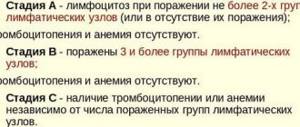Symptoms and signs
Conversion disorder usually develops during puberty. This disorder is more common among women.
The formation of the clinical picture may be associated with severe stress. Symptoms include apparent deficits in motor or sensory function and may sometimes manifest as seizures, indicating neurological or general physical impairment. For example, the patient may experience loss of coordination or balance, weakness, paralysis of the arms or legs, loss of sensation in some parts of the body, seizures, decreased vision, double vision, deafness, loss of voice, difficulty swallowing, or urinary retention.
The clinical picture is quite severe and affects the patient’s quality of life. As the disease progresses, the episode may occur once or recur sporadically. Typically, each episode of the disease is short-lived.
Conversion disorder
The term “conversion” goes back to Freud’s concept of conversion hysteria, according to which a psychosexual conflict is transformed into a somatic disorder. Currently K. r. represent a rather specific and rare nosological unit in the group of somatoform disorders. One of the essential signs is the presence of a somatic symptom, for which there are no objectively detectable physiologist. mechanisms of the disease. In the fourth edition of the Diagnostic and Statistical Manual of Mental Disorders (DSM-IV), K. r. is defined as “a clinical picture in which the predominant disorder is a loss or pathological change in physical functioning corresponding to a somatic disorder, but in reality is an expression of psychol. conflict or need." In addition, the symptoms are beyond the patient’s volitional control and cannot be explained by the presence of a pathophysiological process. Symptoms characterized by algia, sexual dysfunction, or as a component of a more general somatization disorder are not designated as conversion.
Clinical picture
Conversion symptoms are quite delineated and unique; they are characterized by a sudden appearance during periods of significant psychol. stress. In the most obvious or classic cases, conversion symptoms represent pathological changes in sensory or motor functions that mimic those of neurological diseases. The most common symptoms listed in DSM-IV are paralysis, aphonia (loss of voice), blindness or tunnel vision, seizures, anesthesia (loss of sensation) or paresthesia (abnormal spontaneous sensations), and dyskinesia (impaired coordinated movements). Somewhat less often K. r. appears as disorders of the endocrine or autonomic system, manifested by symptoms such as false pregnancy (pseudocyesis) or vomiting.
Etiology
The dominant social and cultural norms significantly influence the direct or indirect expression of various psychol. impulses and motives and determine the authorized or unauthorized roles of the patient. Sociocultural attitudes towards various diseases also influence the patient’s choice of symptoms. It has long been recognized that in the etiology of K. r. intrapsychic factors and secondary benefit from illness are involved.
Previously quite common both among the population as a whole and in military service, K. r. in our time, relatively little common and observed hl. arr. among rural residents and those not affected by health education. The decline in prevalence is undoubtedly influenced by the more stringent diagnostic criteria of DSM-IV and the separate categorization of symptoms such as psychogenic anxiety, psychosexual dysfunction, and somatic symptoms that are components of somatization disorder. Nevertheless, conversion disorders account for about 5% of all neurotic conditions.
See also Complexes, Histrionic personality, Personality disorders
G. Chelun
Source: Psychological Encyclopedia on Gufo.me
- Blog
- Jerzy Lec
- Contacts
- Terms of use
© 2005—2020 Gufo.me
Treatment
The most effective treatment is with the involvement of various specialists: psychiatrists, neurologists, and therapists. After the doctor has ruled out somatic disorders and convinced the patient that the symptoms do not indicate a serious disorder in the body, the patient may feel better, and the symptoms will resolve on their own over time.
The following treatments can be very effective:
- Hypnosis can help a patient cope with stress and control the influence of the psyche on the health of the body.
- Narcoanalysis is used relatively rarely. This procedure involves hypnosis accompanied by sedatives that induce a state of drowsiness,
- In some cases, psychotherapy, including cognitive behavioral treatment, is effective. Any underlying mental health problems (eg depression) should also be treated.
CONVERSION DISORDER
Conversion ( somatization
)
( Latin
conversiō “conversion”, “adjustment”)
is a protective mechanism of the psyche, manifested in the tendency to experience somatic distress in response to psychological stress.
Conversion disorder is traditionally understood as the loss or impairment of physiological functions that lose voluntary control due to psychological problems.
These symptoms in Russian psychiatry were previously considered within the framework of hysterical neurosis .
Often these conditions resemble neurological symptoms, but they can affect any system or organ . In childhood, a combination of conversion and hysterical personality occurs in at least 50% of diagnosed disorders . Unlike other psychosomatic disorders, conversion disorders in children have an equal prevalence in both sexes .
The resulting pathological complex brings primary and secondary benefits to the individual, which forces him to keep the psychological conflict from awareness and thereby protect him from possible influences on him.
IT IS NECESSARY TO EMPHASIZE THAT THE MORE THE MECHANISM OF CONVERSION AND HYSTERIA IS TALKED IN SOCIETY, IN THE MEDIA, IN WORKS OF MODERN CULTURE, THE LESS ARE THESE SYMPTOMS OCCURRED.
It is as if the veil of secrecy necessary for the process of symbol formation is lifted from the conversion symptom..
For example, during the First World War, the most common psychosomatic disorder was tremor - neurotic trembling. During World War II, tremors were virtually unheard of, and the most common psychosomatic disorder was stomach pain .
THUS,
THE ORGANISM FINDS NEW MECHANISMS
TO RELEASE TENSION.
Psychological defense mechanisms are a way for the “I” to fight against painful experiences that are unbearable for the subject .
All psychological defense mechanisms distort reality in order to preserve mental health and integrity of the individual . In this case, the price of mental health: distorted reality, distorted image of the “I”, distorted external world.
Mechanisms of psychological defense are formed initially in interpersonal relationships, then they become internal characteristics of a person , i.e., in individual experience, certain protective forms of behavior are learned.
MAIN FEATURES
PSYCHOLOGICAL DEFENSE MECHANISMS:
— Impulsivity (mechanisms of psychological defense do not depend on the will);
— Reality distortion;
— Lack of awareness by the subject of defensive forms of behavior.
MAIN FUNCTIONS
PSYCHOLOGICAL DEFENSE MECHANISMS:
— Preservation of personal integrity , mental health, a certain “I-image”;
— Regulation of interpersonal relationships.
The primary benefit is, according to psychodynamic theory, the benefit that hysterical symptoms prevent internal conflict from becoming conscious.
Secondary benefit—According to psychodynamic theory, the benefit that hysterical symptoms enable a person to feel favored by others or to avoid unpleasant activities.
Psychodynamic theorists believe that in the formation of hysterical somatoform disorders, two mechanisms operate - primary benefit and secondary benefit.
People benefit primarily from the fact that their hysterical symptoms keep internal conflict out of consciousness.
For example, if a person experiences an unconscious fear of expressing anger, then during a quarrel his leg may become paralyzed, which will not allow his aggressive reaction to reach consciousness.
secondary benefit from their hysterical symptoms by helping them avoid engaging in unpleasant activities or by allowing them to feel favored by others.
Example:
Andrey Yu., 40 years old. He was repeatedly hospitalized in a neurological clinic due to prolonged radiculitis with severe pain and sensory disturbances . During a chance visit to a psychotherapeutic group for parents of teenagers during a psychodramatic staging of his dream, it was possible to find out that he served in Afghanistan, for many years slowly moved up the career ladder, tolerated the tyranny of his boss, and for many years did not allow himself to show emotions of fear and anger. Faced with a disturbing situation during the psychodrama, he did not want to get up after the end of the replay of his dream (functional paralysis occurred) and let out a groan.
By using the technique of verbal reflection and amplification of its sounds, it was possible to cause a cry in the man: he had been “pressing” the emotion of fear into the unconscious for many years . After psychotherapy over the next two years, no neurological symptoms were observed.
Example:
Dmitry, 26 years old, a military man, a correspondence student at the Faculty of Psychology, took the risk of acting as a client in psychotherapy classes . This is how he described his frustration.
“ The main symptom of my disease is the inability to breathe through my nose, my nose is constantly clogged, I have to resort to medication . Examination, treatment, climate change did not yield any results. I believe that these are manifestations of a psychosomatic illness.
My father died in 1979 (work injury). In 1985, the mother married for the second time, and sister Tanya was born. From the very beginning of my relationship with my stepfather, differences arose in our understanding of some things in life. Over time, his role as a father when interacting with me manifested itself in suppressing my desires, depriving me of something, threats to deprivation, punishment (not physical). As a rule, my mother took my stepfather’s side because she thought about the usefulness of my upbringing. The older I got, the stronger the opposition manifested itself due to my character . At the age of 8-10, I continued to show the firmness of my convictions until 1-2 years before the army, as a result of which I had to fulfill the will of my stepfather through “I don’t want ” with “external emotional manifestations” on both my and his sides. I began to hate my stepfather. According to my mother, my stepfather loves me very much and wants only good things for me. The first signs of a prolonged runny nose appeared at the age of 14-15 . Relations with peers were good, but with the class teacher everything was much worse. There were incidents, for example, she called me a scumbag, I broke the windows of her house. At the age of 18 he was drafted into the army. Almost all the negative aspects of army relations had to be endured: suppression, subordination to someone else's will, humiliation. After serving in the armed forces, I work in the Ministry of Internal Affairs. The principle of operation of law enforcement agencies is a hierarchical ladder, subordination, subordination.
I believe that such life moments as relationships at school, relationships in the army, relationships at work, plus my relationship with my stepfather are the reasons for my chronic runny nose, that is, the inability to breathe. Restriction of air in the lungs is a lack of freedom of expression, inability to spontaneous actions, and only the achievement of a given task or program.”
Some psychoanalysts believe that a chronic runny nose is a manifestation of pent-up tears.
PSYCHOSAMOTOSES
Psychosamotic diseases are psychosomatic diseases in a narrower sense..
They are based on a primary bodily reaction to a conflict experience, accompanied by changes and pathological disorders in the organs.
The corresponding predisposition may influence the choice of the affected organ or system .
Psychosomatoses ( mentally caused somatic disorders ) are physical diseases or disorders in the pathogenesis of which mental factors (conflicts, tension, dissatisfaction, mental suffering) play a role.
IT IS GENERALLY SUGGESTED THAT THE MECHANISM OF ARISING PSYCHOSOMATOSES IS THE FOLLOWING:
A mental stress factor causes affective tension. Affect is seen as a bridge between the mental and somatic domains. When affect is suppressed, when motor and autonomic manifestations are blocked, the neuroendocrine system is activated and changes occur in the vascular system and internal organs.
FIRST THESE CHANGES WILL BE












